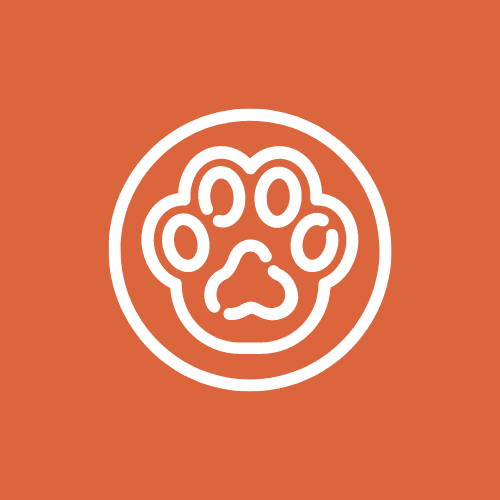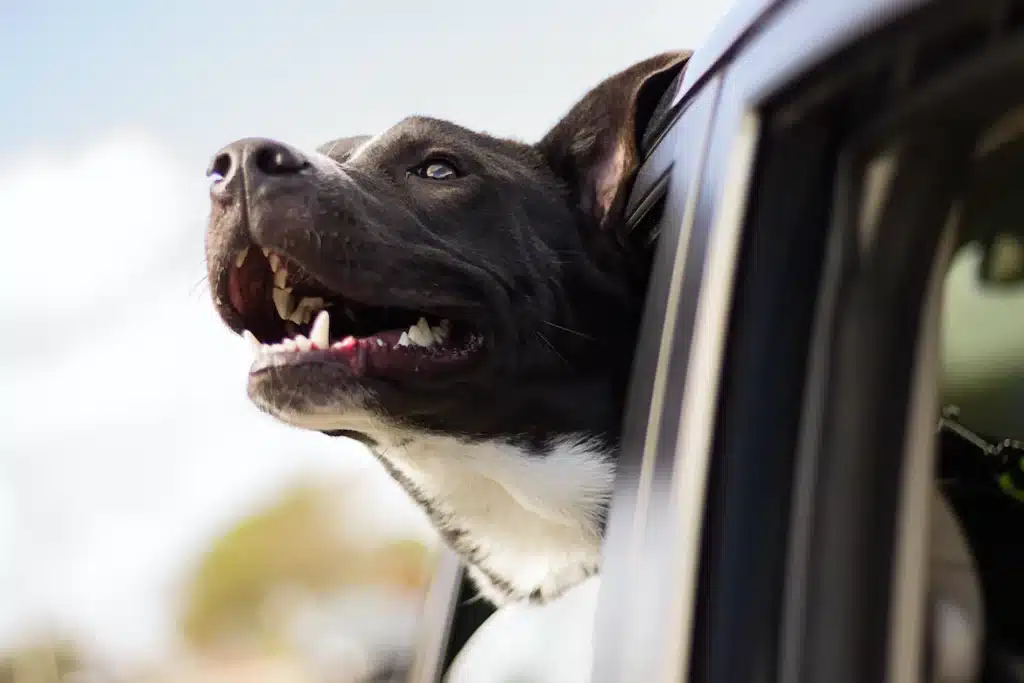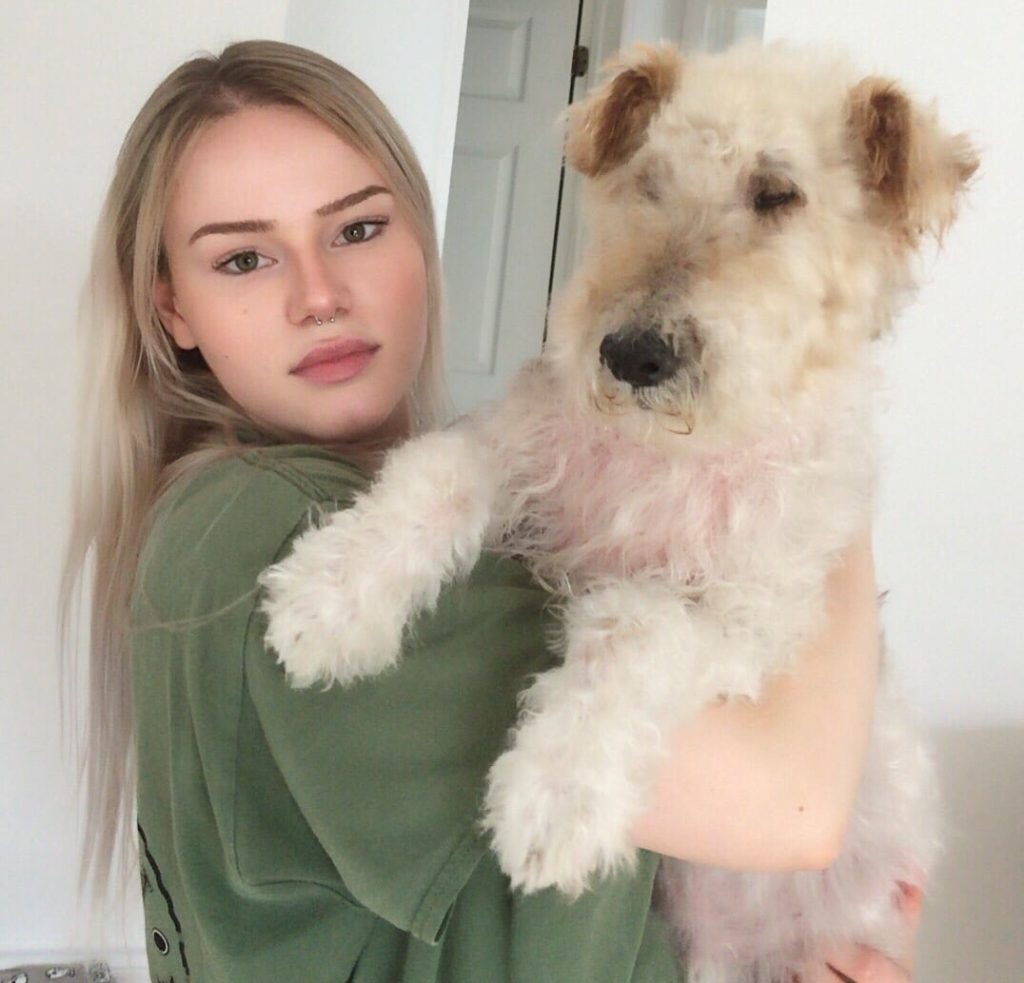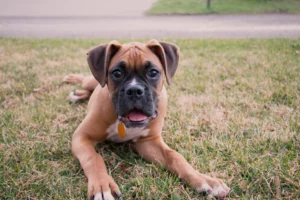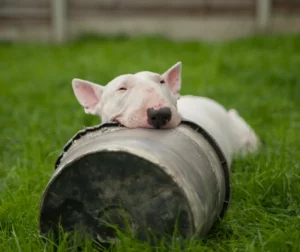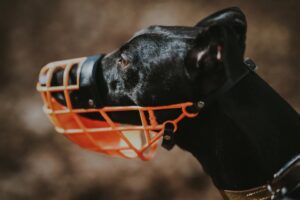An overly excited dog in the car can be stressful for all passengers and distract the driver. In this article, you will find training exercises, as well as several tools to help your dog stay calm in the car.
Why Is My Dog Overly Excited in the Car?
Here are the 6 reasons why your dog is overly excited in the car:
- Positive associations to the car
- Reflects your emotions
- Lack of stimulation
- Lack of impulse control
- Anxiety
- Motion sickness
Positive associations to the car
Dogs learn by association by linking an event to its immediate consequence. So if your dog gets in a car and then does an activity he enjoys, he will positively associate with the car.
For example, if we take the car only to go to the park, he will understand that getting in the car means he’s going to have fun.
He can also make negative associations. For example, many dogs don’t like going to the vet. So, if we take the car only to go to the vet, he will have a negative association with the car.
Reflects your emotions
Your dog is an excellent observer and constantly analyzes you. This is how he knows when you are sad, anxious, calm, excited, etc. Also, talking to him with enthusiasm will excite your dog more.
If you’re anxious to go on a car ride, your dog will be too. In his eyes, you’re a leader, so if you’re stressed or afraid to get in the car, he will get preoccupied too.
Lack of stimulation
The majority of unwanted behaviors are related to a lack of mental and physical stimulation.
Your dog is eager to spend his energy and shows his impatience by barking or jumping. He could be so excited that he loses control and starts urinating unintentionally.
Lack of impulse control
It is common to see a dog who has trouble controlling himself and this is completely normal, especially in young dogs.
We could even fuel his excitement by saying “Do you want to go to the park? Do you want to go on a car ride? Who’s a good boy? Let’s go!”
Anxiety
There could be a mixture of excitement and anxiety. Not knowing the destination can be stressful for your dog.
For example, if you take the car to the park, but also to the vet, he can have both positive and negative associations. He doesn’t know if getting in the car means he’s going to the park or the vet.
To help your dog, make sure he is calm before and during the car ride.
Motion sickness
Some dogs get motion sickness, which causes stress. He associates the car with a negative emotion since every time he’s in it he does not feel well.
Also, your dog could have motion sicknesses since he is anxious. Your vet can recommend very effective medications to treat anxiety or motion sickness.
Here are some tips to help your dog with motion sickness:
- Avoid feeding him 2 hours before leaving
- Take short trips or stop frequently
- Open windows
- Allow him to look forward and not backward
- Bring his favorite blanket
How to Calm an Overly Excited Dog in the Car?
#1. Mental and Physical Stimulation
Before you prepare to go out, offer him an activity where he can burn off his excess energy. This will make it easier for your dog to control himself and stay calm.
The activity where he needs to focus will spend his energy faster than physical activity. To do this, you can give him an interactive bowl, a Kong, or a licking mat, or teach him a new trick.
You can also go for a walk, play fetch, or do any other activity that will help him burn off his excess energy before getting in the car.
#2. Ask to Sit-Stay
Ask him to sit-stay before you open the front door and before you open the car door. Wait until he is calm before allowing him out of the house or into the car. This exercise will help him control his impulses and keep him calm.
We often have a ritual before leaving the house like putting on our shoes, putting on his harness, taking the leash, the keys, and then our purse or backpack. All these steps will increase his level of excitement since he anticipates the exit.
Whenever you see his excitement increase, ask him to sit down and wait for him to calm down. It’s important to ignore him until he decides to sit down and calms down. In other words, don’t look at him, touch him or talk to him.
It may take a while for him to calm down, so you’ll need to be patient.
He might just get more and more aroused when you’re ignoring him. Don’t worry, this is called an extinction burst and it means he’ll calm down soon.
More specifically, he tries to do everything in his power to achieve his ends. Your dog is used to you opening the door even if he’s overexcited, which reinforced his behavior. On the other hand, by breaking this ritual, you’re teaching him self-control.
#3. Keep Him Busy
Bring a chew bone, a Kong, or even a lick mat in the car. By keeping busy, you can prevent him from barking or looking outside, which could increase his excitement.
If your dog chews in his bone, he won’t be able to bark at the same time since these are incompatible behaviors. In addition, he will be focused on chewing his bone, which prevents him from looking outside.
#4. Teach Self Control
It is important that your dog knows how to control his impulses to avoid unwanted behavior from happening. It is much easier to manage a dog that is able to calm down when excited. Thus, it creates a dog with predictable behavior.
If he gets excited when you take the leash out, this exercise is for you. You can do the same exercise for the harness.
Grab the leash, then put it back and completely ignore your dog. Once he sits or lies down, tell him “Yes”, then walk back to the leash. Repeat this exercise until he stays calm when you touch the leash.
Then, put him on the leash as usual and ignore him until he becomes calm again. When he sits or lies down, tell him “Yes”, then head for the exit. Repeat this exercise until he calmly follows you to the door.
It is important not to talk to him, look at him, or touch him when you are doing the exercise. We have to let him think and make his own decisions. He must decide for himself to calm down to allow him to learn and exercise his brain.
Help your dog control his impulses by training him whether he pulls on the leash, barks, bites, or chews inappropriately, jumps, digs, or guards resources.
#5. Reward Him Every Time He is Calm
For this exercise, it is preferable to be 2 people so as not to distract the driver. There is also another option if you’re alone.
Whenever your dog becomes calm during the ride, wait 3 seconds and then reward him with a high-value treat.
A high-value treat can be chicken, sausage, peanut butter, or cheese for example. The better the treat is in his eyes, the sooner he will understand that staying calm pays off.
Give him small amounts, no bigger than a pea. We must focus on quality over quantity, which will prevent him from ingesting too many calories and becoming sick.
The treat you choose should only be given for the times you train him.
If you’re alone, you can do the same exercise by praising your dog with a keyword like “Yes”, instead of a treat. On the other hand, keep a calm tone to avoid exciting him.
#6. Stay Calm and Relaxed
Dogs mirror their pet parent’s emotions. So, by staying calm and relaxed, you won’t fuel his excitement.
Scolding your dog or worse, hitting him, prevents him from learning and risks aggravating the problem or creating others. Intimidating him by shouting or hitting him creates an unpredictable, suspicious and unhappy dog.
In addition, if he is already anxious, it increases his anxiety even more, which would lead to aggressive behavior.
He needs to be guided and feel protected in your presence. He will listen to you more if you impose your limits while staying kind. Thus, there are good and bad ways to punish your dog.
#7. Train Him to Get in the Car
Before going for a car ride, get your dog used to being calm without even starting the car. Get him in the car as usual and wait for him to calm down while ignoring him. Wait 3 seconds after he calms down, say “Yes” and reward him with a high-value treat.
Timing is very important to be sure to reinforce good behavior. The word serves as a marker so that he can make the association at the exact moment when he has the desired behavior.
Get out of the car, go back home, then repeat the exercise until he has no reaction. Do the exercise several times during the day, in order to divide the exercise into several small segments.
It is beneficial to take breaks between exercises to prevent him from becoming exhausted and stressed.
Then, repeat the same exercise, but start the car. Wait for him to calm down, reward him with the word and the treat, then turn the car off. Repeat this exercise until he finds it boring.
#8. Train Him on Car Rides
Bring your dog on a car ride with no destination. Drive around the neighborhood, then return home. The more your dog gets used to being in a car, the calmer he will remain.
Vary the route by not always taking the same roads, but do not go to places where he could get excited.
Do this exercise until he is calm in the car and remember to always reward him when he is calm.
By having no destination, the car ride becomes boring and less stressful. The goal is for him to have a neutral emotional response to riding around in the car.
#9. Calming Music
There is therapeutic music to calm dogs. These are specific frequencies that have been clinically tested. It is also a therapeutic tool for anxious dogs that can be used both in the car and at home.
Several options are available to you to obtain this music. The best options is Victoria Stillwell’s Positively Calming CD or the Pet Acoustics device.
You can also go on the Youtube channel Relax My Dog which offers a multitude of music of all genres.
#10. Calming Supplement
There are plenty of supplements that contain L-theanine that helps dogs relax. These are natural amino acids found in black and green tea leaves.
L-theanine contains properties that help reduce stress and anxiety. It can also improve sleep for both dogs and humans. It can even be used to prevent viral infection.
You can find this supplement in pet stores as a treat or tablet.
#11. Use a Crate
It may seem cruel to crate your dog. On the other hand, it is the most comfortable option for him and it is the best way to protect him in the case of an accident.
Putting your dog in a crate is a great way to control his environment. If you use a crate at home and your dog feels safe in it, it would be beneficial to use one in the car as well.
If your dog is not used to being in a crate, it is essential to train him before installing one in the car. He must have a positive association with his crate so that he feels safe there and can relax.
For some dogs, being in a crate is reassuring and helps reduce stress and anxiety. It is also easier to prevent the outside world from stimulating him.
#12. Use Car Equipment
It is best to invest in a dog seat belt, as well as a travel harness. This will prevent your dog from wandering from window to window or blocking your view.
This attachment leaves him just enough space to sit or lie down. Thus, it reached him to relax in the car.
#13. Install Tinted Windows
This is an excellent way to prevent the outside world from stimulating him too much since he will be less tempted to look outside.
If you are having trouble calming your dog down after trying everything, it would be best to contact a dog trainer or behaviorist. He will help you set up a personalized protocol for your needs and those of your dog.
Bibliographic Soucres:
